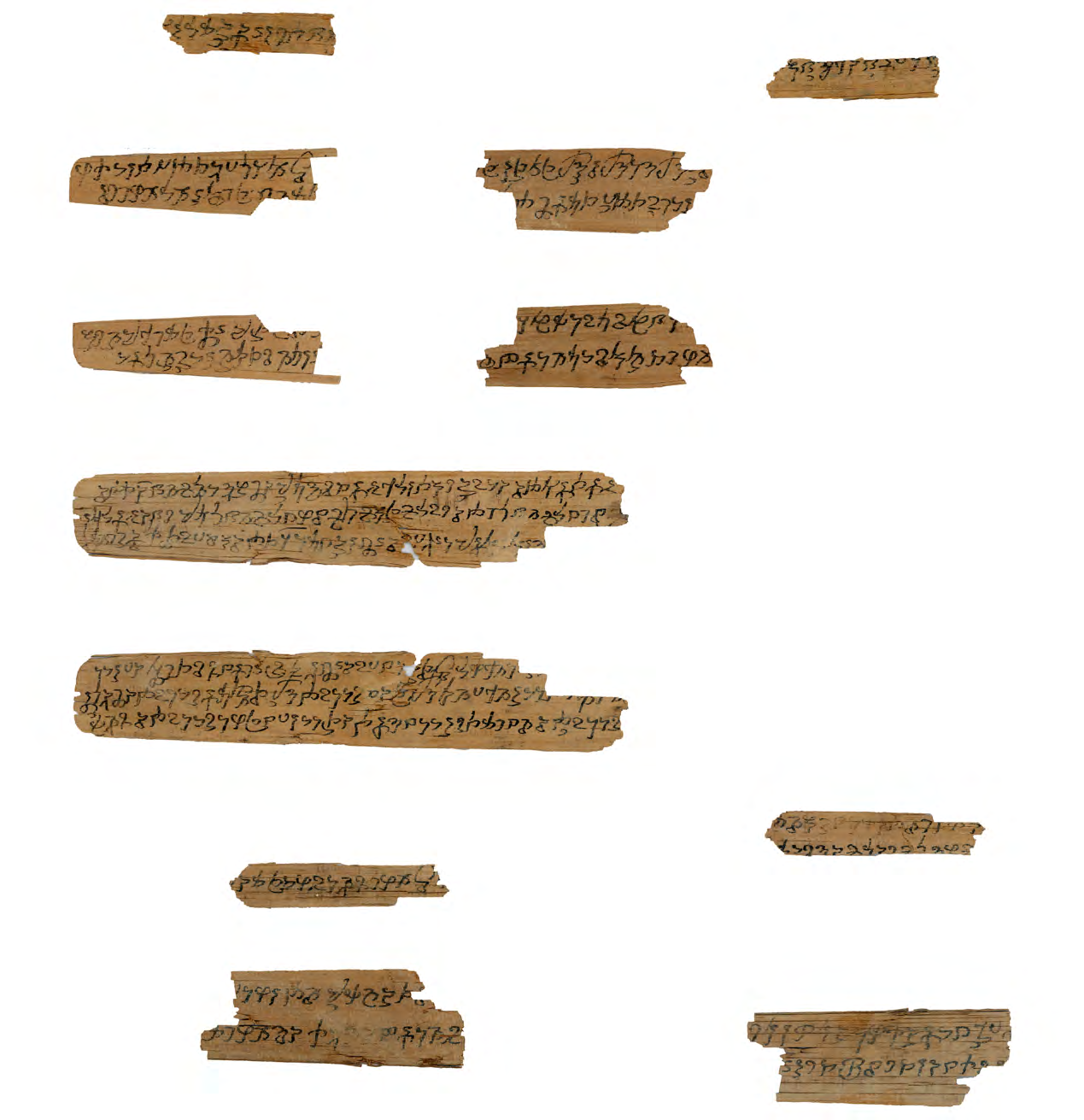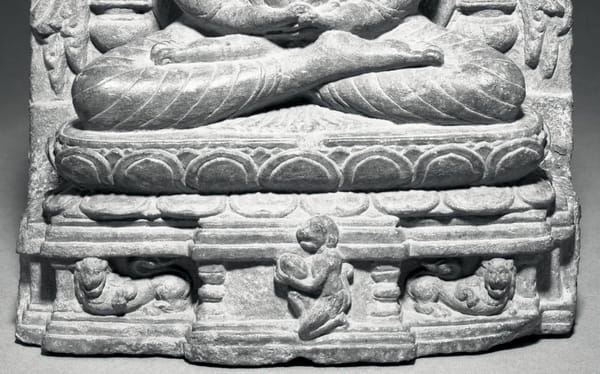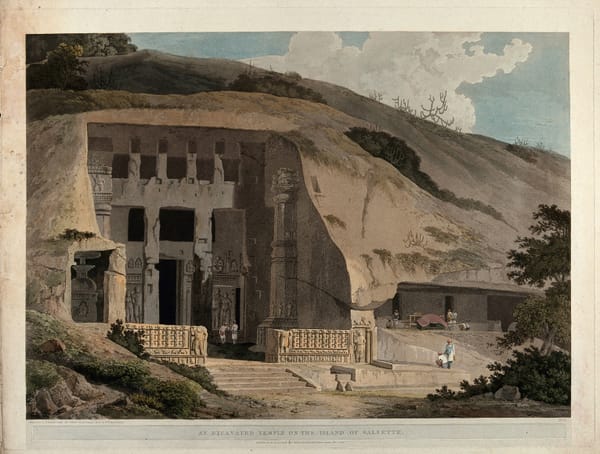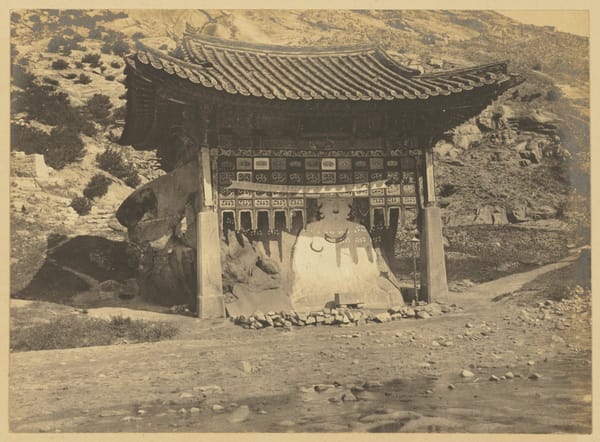Mahāparinirvāṇasūtra, 2nd-3rd C.E.


Transliteration, folio 3, recto (read in opposite direction)
1 /// droniye nikṣipisu satahasya acayena teladronito udhvaritvaṃ sarvagaṃdhotakehi kayaṃ sapayisu
2 /// [stra]yuvaśatehi kayaṃ veḍhayisu ahatehi paṃcahi vastrayugaśatehi kayaṃ veḍhitva ayaṃsadroni telena
3 /// + .v. + + + [dh. n.] ci[da] cinitva raño mahasudarśanasya śarira j̄apayisu catumaharpathe sthuvaṃ akarisu
The Kharoṣṭī Manuscript
The manuscript consists of six fragments, and these have been found to represent parts of five original folios. The script is Kharoṣṭī, a script written from right to left, employed in the northwestern part of ancient India. It is reminiscent of inscriptions from the time of the Kuṣāṇa king Kaniṣka and his successors, and a probable date of the second-third century A.D. has therefore been postulated. A seventh fragment from the same manuscript has been found in another collection (BMSC vol I, p. 255-258).
The fragments contain different episodes in the Mahāparinirvāṇasūtra: 1) contains part of the episode in which the Buddha tells the monks to spend the rainy season around Vaiśālī while he remains in Veṇugrāmaka (Pāli: Beluvagāmaka) (recto), and the beginning of the episode at the Cāpāla-caitya (verso); 2) contains portions of the narrative concerning the dialogue between Māra and the Buddha, in which the former requests the latter to pass into parinirvāṇa immediately; 3) contains part of the episode in which the death and funeral ceremonies of King Mahāsudarśana is described, which is a different sutta in the Pāli canon; 4) contains perhaps the incident in which the monk Upavāṇa blocked the deities from watching the Buddha’s parinirvāṇa.
This version of the Mahāparinirvāṇaūtra does not have any definitively established concordance with any of the other known editions in Indic or other languages. Still, some noteworthy parallels to the Chinese Dīrghāgama version have been noted by the editors,and this has led them to postulate a Dharmaguptaka affiliation. One curiosity of the present manuscript is that the encounter between the Buddha and Māra seems to be located at Rājagr̥ha, and not Uruvelā as in the other versions.

Buddhist Manuscripts in the Schøyen Collection vol. I, pp. 243-273
Editors: Mark Allon and Richard Salomon
Material: Palm leaf
Script: Kharoṣṭī
Date: 2nd-3rd century A.D.
Language: Partially sanskritized Gāndhārī



